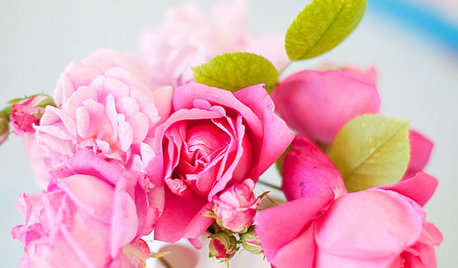Best time to prune for thinning and heading cuts
whaas_5a
10 years ago
Related Stories

WINTER GARDENINGPruning Secrets for Exquisite Roses
Encourage gorgeous blooms year after year with this time-tested advice on how to prune your rosebush in winter for health and shape
Full Story
GARDENING GUIDESHow to Prune Your Flowering Shrubs for the Best Blooms
Less is often more when it comes to properly pruning flowering shrubs. Here’s what to do and why
Full Story
GARDENING GUIDES7 Ecofriendly Gardening Ideas That Also Cut Chore Time
Spend less time weeding, less money watering and more moments just sitting back and enjoying your healthy garden
Full Story
GARDENING GUIDESGet a Head Start on Planning Your Garden Even if It’s Snowing
Reviewing what you grew last year now will pay off when it’s time to head outside
Full Story
GARDENING GUIDES10 Easy Edibles for First-Time Gardeners
Focus on these beginner-friendly vegetables, herbs, beans and salad greens to start a home farm with little fuss
Full Story
HOME OFFICESQuiet, Please! How to Cut Noise Pollution at Home
Leaf blowers, trucks or noisy neighbors driving you berserk? These sound-reduction strategies can help you hush things up
Full Story
BUDGET DECORATINGSimple Pleasures: Treat Yourself to Cut Flowers
Enjoy priceless beauty with just a few inexpensive stems — and you don’t need fancy vases, either
Full Story
REMODELING GUIDESTransition Time: How to Connect Tile and Hardwood Floors
Plan ahead to prevent unsightly or unsafe transitions between floor surfaces. Here's what you need to know
Full Story
EDIBLE GARDENSWhy Grow Quince? For Beauty, Fragrance and Old-Time Flavor
Delightfully perfumed fruit and lovely spring blossoms make this apple and pear cousin worth a spot in the garden
Full Story
DECORATING GUIDESHow to Remove Wallpaper in 4 Steps
Learn the best way to remove wallpaper with only water (and elbow grease) so your next wall treatment will look great
Full Story








gardener365
whaas_5aOriginal Author
Related Professionals
Chattanooga Landscape Architects & Landscape Designers · River Forest Landscape Architects & Landscape Designers · Alexandria Landscape Contractors · Brooklyn Park Landscape Contractors · Clearlake Landscape Contractors · Edwardsville Landscape Contractors · Lynn Landscape Contractors · Miller Place Landscape Contractors · Norristown Landscape Contractors · Northport Landscape Contractors · Oklahoma City Landscape Contractors · Seminole Landscape Contractors · South Farmingdale Landscape Contractors · Vashon Landscape Contractors · Lauderdale Lakes Landscape Contractorsmaple_grove_gw
wisconsitom
ken_adrian Adrian MI cold Z5
Sara Malone Zone 9b
whaas_5aOriginal Author
botann